If you're involved in managing IT infrastructure, you know how critical it is to keep everything running smoothly. Infrastructure monitoring tools are essential for this purpose. They provide a window into your system's health, helping you catch issues before they cause serious problems.
This isn't just about avoiding downtime (which is crucial); it's about optimizing performance and getting ahead of potential issues. With the world relying more on digital services, the pressure on infrastructure to perform reliably is higher than ever. Let’s dive into how these tools can make a massive difference for your team and operations.
Imagine being instantly alerted the moment something goes wrong or even before a problem arises. That's what real-time monitoring can do for you. This capability means you're one step ahead, ready to tackle issues before they impact users or escalate into more significant problems.
With detailed analytics and predictive tools, infrastructure monitoring solutions can forecast potential issues based on trends and historical data. This isn't just about fixing problems—it's about preventing them. For engineers, this proactive approach is invaluable. It reduces the time spent on firefighting and allows more maintenance system capabilities.
Is your Kafka getting over utilised w.r.t memory or is the connection pool of your postgreSQL DB going down? These tools provide insights into resource usage and performance trends, helping you optimize the allocation and usage of your IT assets. This means better performance across the board and more cost-effective operations.
Ultimately, the smoother your infrastructure runs, the better the experience for your end-users. Whether it’s faster load times or fewer outages, monitoring tools help ensure your services are reliable and efficient, essential for user satisfaction and retention.
The backbone of practical monitoring tools lies in their automated dashboards. These dashboards should be comprehensive and tailored to the specific needs of critical infrastructure components such as databases, Kafka, Redis, etc. A well-integrated tool will offer:
The utility of a dashboard is significantly enhanced by its ability to display complex data understandably. Key aspects include:
Integration capabilities determine how well a monitoring tool can adapt to your existing setup and how effectively it can gather necessary data:
As your infrastructure evolves, so too should your monitoring tools. Scalability is crucial:
Beyond alerting you to issues, an advanced monitoring tool should:
In this section, we will explore some popular tools for infrastructure monitoring tools, so without any further ado let's dive in
Dynatrace
Elastic Stack
New Relic
App Dynamics
Site24x7
Datadog
Prometheus
Solar Winds
Better Stack
Zabbix

Dynatrace provides an all-in-one monitoring solution that leverages AI to automate operations and support complex environments.
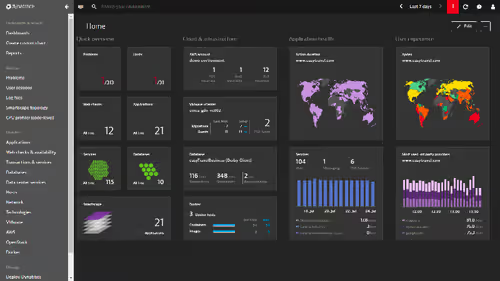
Company overview: Dynatrace provides an all-in-one monitoring solution that leverages AI to automate operations and support complex environments.
Pros:
Cons:
Basic infrastructure monitoring starts at $21/month

Elastic Stack, or ELK Stack, combines powerful tools for searching, logging, and data visualization.
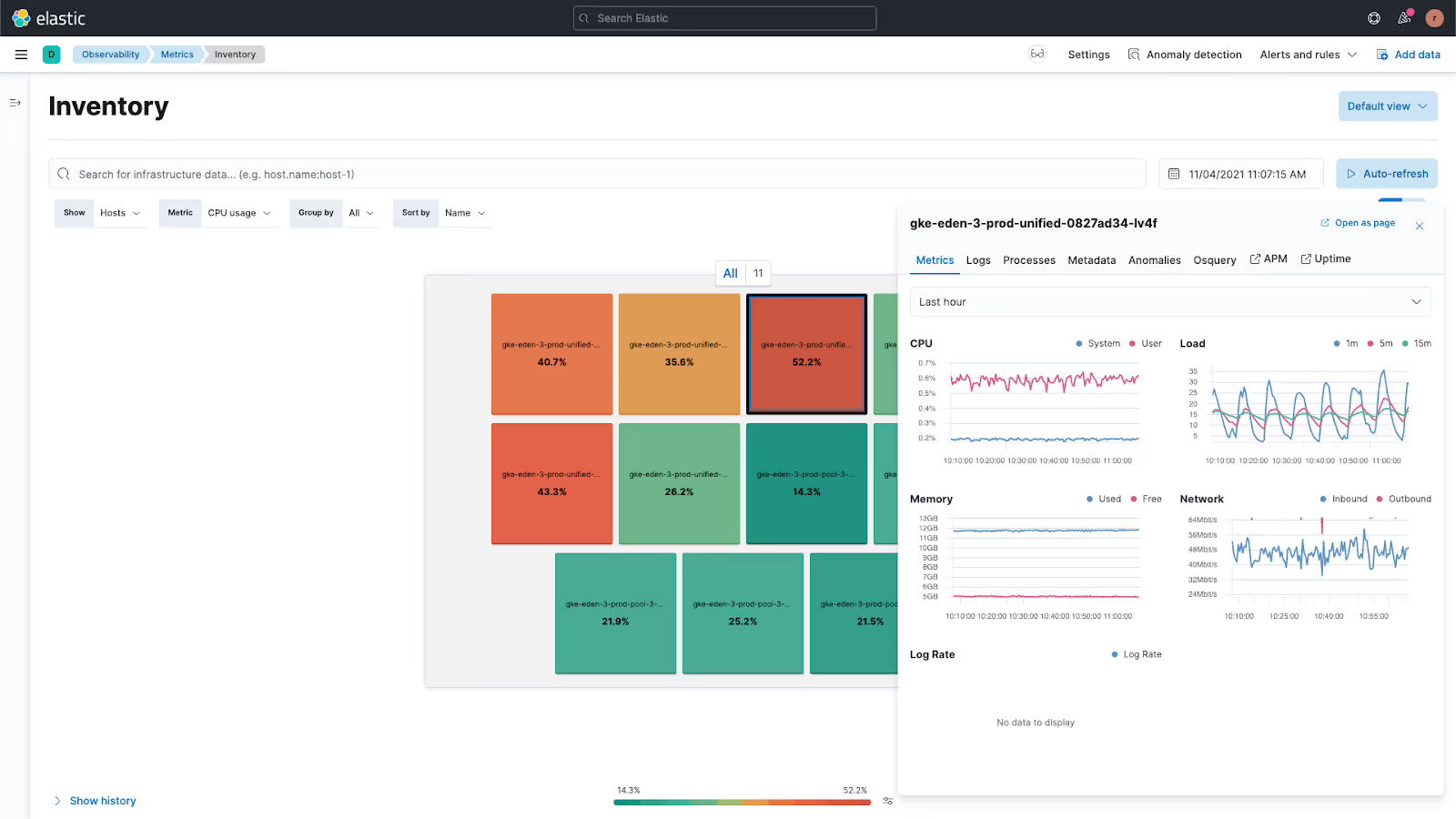
Company overview: Elastic Stack, or ELK Stack, combines powerful tools for searching, logging, and data visualization.
Pros:
Cons:
Free for primary use, with higher-scale operations costs.

Provides full-stack observability across your entire infrastructure.
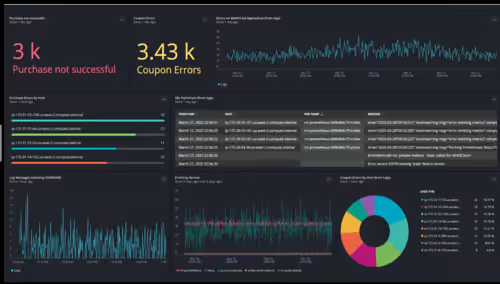
Company overview: Provides full-stack observability across your entire infrastructure.
Pros:
Cons:
Free tier available; premium features are priced based on usage.

Part of Cisco AppDynamics focuses on maximizing performance and visibility across environments. Full-fledged application performance monitoring tool offering in-depth insights into application ecosystems.
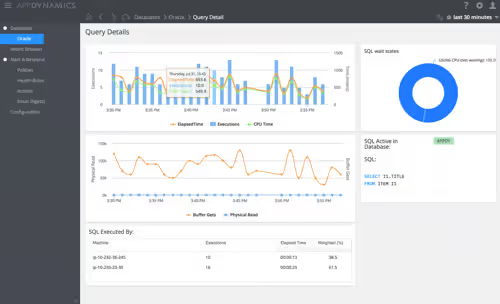
Company overview: Part of Cisco AppDynamics focuses on maximizing performance and visibility across environments. Full-fledged application performance monitoring tool offering in-depth insights into application ecosystems.
Pros:
Cons:
Starts at $6/month per CPU core for infrastructure monitoring.

Site24x7 offers a comprehensive monitoring solution that covers everything from websites to networks and servers.
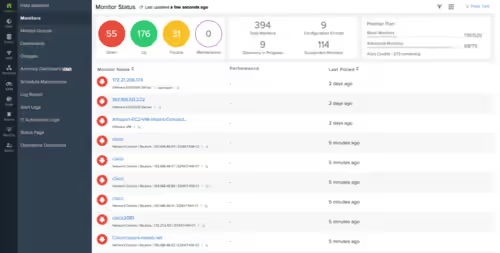
Company overview: Site24x7 offers a comprehensive monitoring solution that covers everything from websites to networks and servers.
Pros:
Cons:
Basic infrastructure monitoring starts at $9/month.

Datadog is a well-regarded platform that integrates and automates infrastructure monitoring across diverse environments.
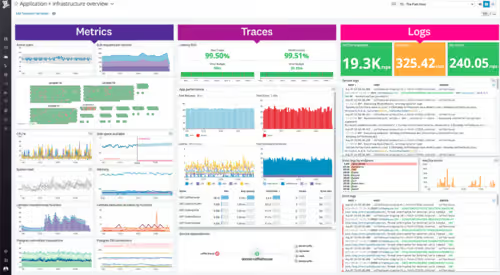
Company overview: Datadog is a well-regarded platform that integrates and automates infrastructure monitoring across diverse environments.
Pros:
Cons:
A free basic plan is available; more comprehensive plans start at $15/month.

Prometheus, developed at SoundCloud in 2012, is now a standalone open-source project and part of the Cloud Native Computing Foundation. It is mainly known for its robust monitoring capabilities of time-series data.
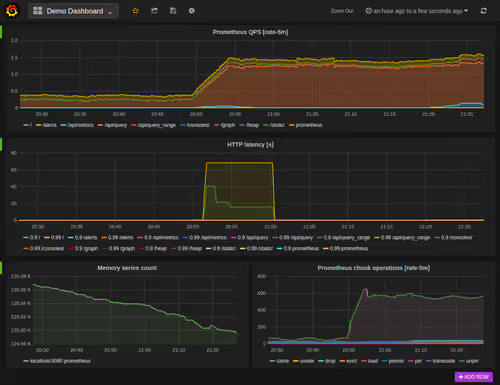
Company overview: Prometheus, developed at SoundCloud in 2012, is now a standalone open-source project and part of the Cloud Native Computing Foundation. It is mainly known for its robust monitoring capabilities of time-series data.
Pros:
Cons:
Free as it is an open-source tool.

SolarWinds, founded in 1999 and headquartered in Austin, Texas, offers a wide range of software tools, one of which includes advanced infrastructure monitoring solutions known for their comprehensiveness and ease of use.
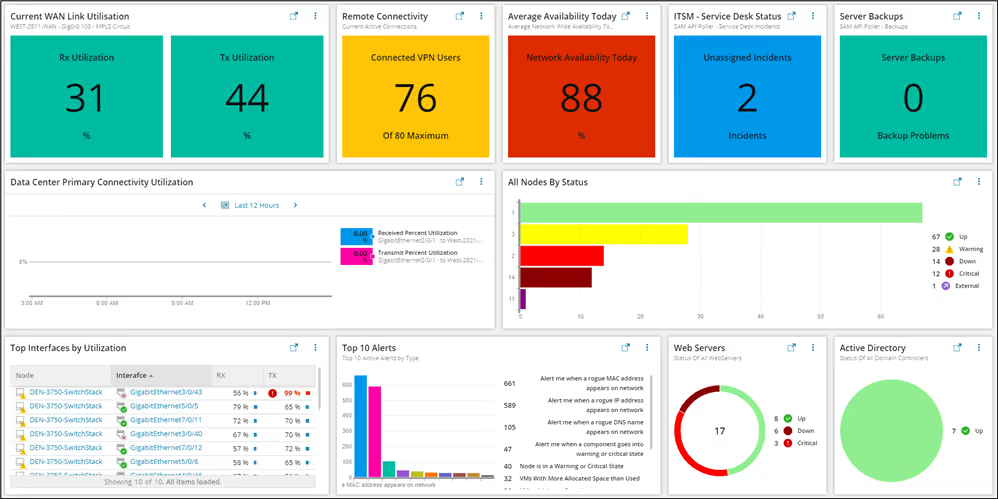
Company overview: SolarWinds, founded in 1999 and headquartered in Austin, Texas, offers a wide range of software tools, one of which includes advanced infrastructure monitoring solutions known for their comprehensiveness and ease of use.
Pros:
Cons:
Pricing varies based on the scale and specific products used; typically requires a quote from the company.

Better Stack offers a modern approach to infrastructure monitoring, emphasizing incident management and uptime communication.
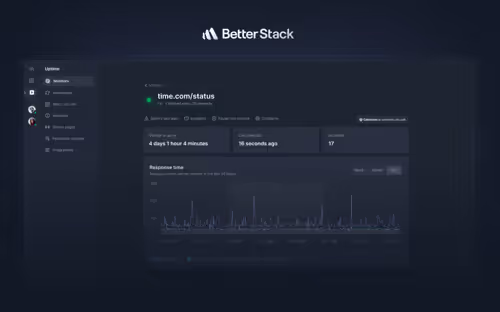
Company overview: Better Stack offers a modern approach to infrastructure monitoring, emphasizing incident management and uptime communication.
Pros:
Cons:
Starts free, with paid plans offering more sophisticated features.

Zabbix offers a free, open-source monitoring solution suitable for various scales and complexity.
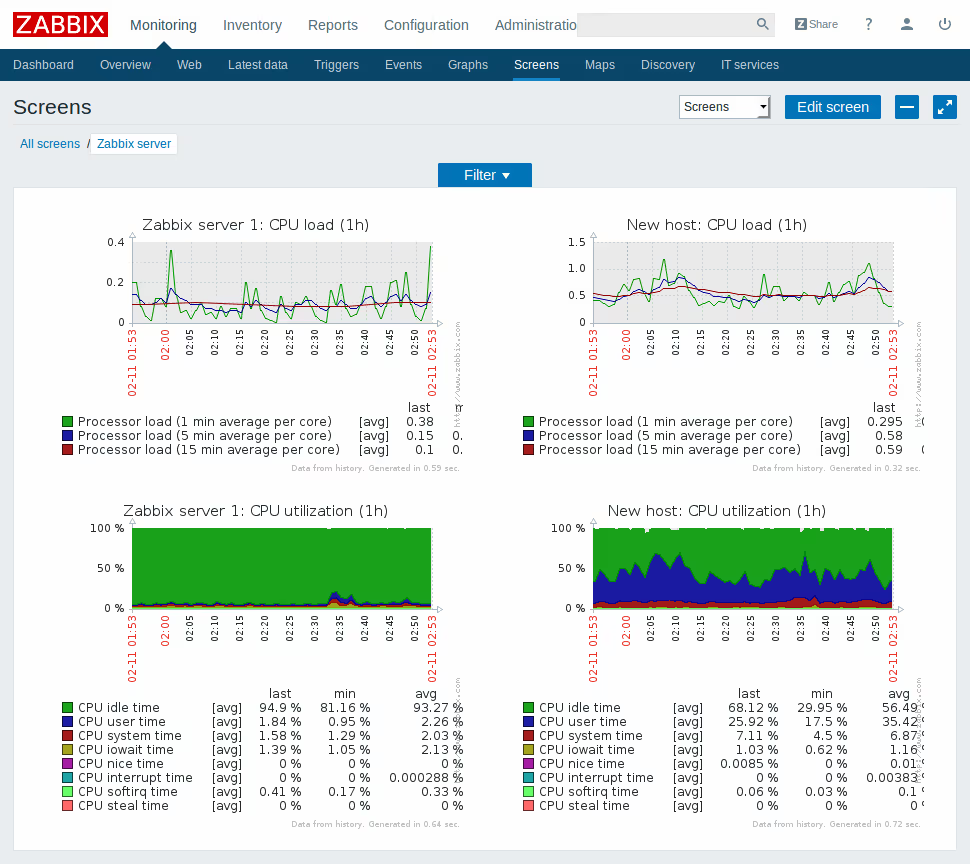
Company overview: Zabbix offers a free, open-source monitoring solution suitable for various scales and complexity.
Pros:
Cons:
Free, open-source software
Choosing the right infrastructure monitoring tool is crucial for maintaining the health and efficiency of your IT operations. Each tool offers unique strengths that can be matched to your specific needs. Whether you prioritize cost, scalability, ease of use, or advanced features, there’s an option out there that’s right for you. Take the time to explore these tools further and find the perfect partner to help keep your infrastructure on track.
Try Doctor Droid — your AI SRE that auto-triages alerts, debugs issues, and finds the root cause for you.
(Perfect for DevOps & SREs)

Install our free slack app for AI investigation that reduce alert noise - ship with fewer 2 AM pings
Everything you need to know about Doctor Droid
Infrastructure monitoring is the process of tracking the performance, availability, and health of IT infrastructure components like servers, networks, and storage systems. It's important because it helps identify issues before they cause outages, optimizes resource usage, and ensures your systems are running efficiently to support business operations.
Select a tool based on your specific requirements, including your infrastructure size, budget constraints, technical expertise, and the specific metrics you need to track. Consider factors like scalability, ease of integration with your existing stack, customization options, and whether you prefer open-source or commercial solutions.
Look for real-time monitoring capabilities, comprehensive dashboards, customizable alerts, historical data analysis, automation features, integration capabilities with other tools, and robust reporting. Depending on your needs, you might also prioritize AI-powered anomaly detection or distributed tracing functionality.
Open-source tools can be very effective and offer great flexibility and community support. However, commercial solutions often provide more comprehensive technical support, easier setup, and more polished interfaces. The effectiveness depends on your specific needs, in-house expertise, and willingness to configure and maintain the system.
Costs vary widely from free open-source solutions to enterprise-grade tools that can cost thousands of dollars monthly based on infrastructure size. Many commercial tools use pricing models based on the number of hosts, metrics collected, or data volume. Most offer tiered pricing plans and free trials to help you determine the right fit.
Yes, quality monitoring tools can help prevent outages by detecting early warning signs and anomalies before they escalate into full-blown problems. Through proactive alerts and trend analysis, these tools enable teams to address potential issues before they impact system availability.
Implementation complexity varies by tool. Some cloud-based SaaS solutions can be set up in minutes with minimal configuration, while others—especially on-premises solutions—might require significant setup time and expertise. Consider your team's technical capabilities when selecting a tool, and look for options with good documentation and support resources.
Yes, most modern monitoring tools support hybrid environments. Look for tools that offer native integrations with major cloud providers like AWS, Azure, and Google Cloud, as well as capabilities for monitoring traditional infrastructure components.
Dr. Droid can be self-hosted or run in our secure cloud setup. We are very conscious of the security aspects of the platform. Read more about security & privacy in our platform here.
Dr. Droid can be self-hosted or run in our secure cloud setup. We are very conscious of the security aspects of the platform. Read more about security & privacy in our platform here.


